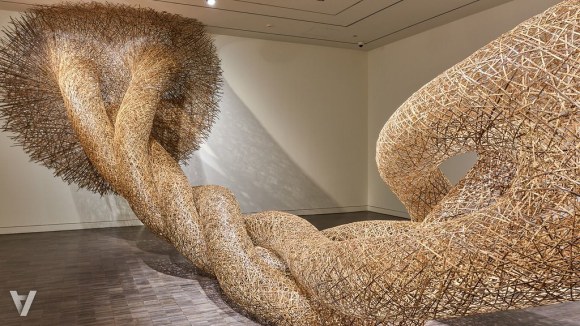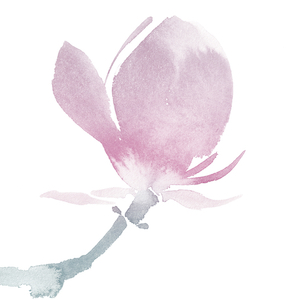Hard with a Soft Heart.
By Sana Joseph
In the realm of nature’s enchanting creations, there exists a plant whose tale intertwines with the very fabric of human existence. Behold the wondrous bamboo, a symbol of resilience and grace. In its slender form, it calls with a dainty elegance, inviting us to explore its incredible properties and the extraordinary creations it can birth. Read more on Bamboo- the “green steel” of 21st century on Hard with a Soft Heart.
Like a dancer poised on the edge of possibility, bamboo sways with the gentlest breeze, its supple stems bending and swaying in a harmonious rhythm. A testament to its remarkable strength, it defies the odds, for in its flexibility lies its true might. Through the passage of time, humanity has found solace in its many forms.

From ancient cultures to modern civilisations, its versatile spirit has been harnessed in the form of roof shelters, buildings and sturdy floors, and skilfully crafted tools, instruments, and implements. Bamboo truly is a testament to its profound usefulness.
Often referred to as the “green steel” of the 21st century, bamboo is a plant species of giant grass that is abundant, fast-growing, and cost-effective.
Our first stop takes us to the breathtaking bookshop The Infinity Mind in Shanghai. This is not your typical bookstore. With the idea of creating an interaction space between readers and creators, this architectural project installation is a visual treat that seamlessly blends traditional craftsmanship and modern design.
The centrepiece of this remarkable endeavour is an awe-inspiring installation crafted entirely from intricately woven bamboo. The interior is designed with a Y-shape-layering concept, representing the journey from nature to mimicking nature and eventually returning to it. These bamboo structures are so delicately constructed that they form abstract structures that seem to be draped like fabric over the walls and ceiling. This woven bamboo ‘Fabric’ gives shape and form to the internal building.
Traditional weaved bamboo structures seamlessly transition from the exterior of the building to the interior, following the contours of the architecture. These bamboo constructions take on soft arcs and the juxtaposition of the traditional bamboo installations with the postmodern style of the bookstore creates a striking contrast. As sunlight filters through the woven patterns, light and shadow dance upon the structure, imbuing it with depth and texture.
Continuing the journey, the next space, stopped in Sydney, Australia, where an extraordinary bamboo installation was formed. From 7th July to 10th December 2016, the Sherman Contemporary Art Foundation (SCAF) hosted an awe-inspiring exhibition featuring the innovative “Green Ladder” Pavilion.
The bamboo installation was a grid-like pavilion constructed primarily using bamboo poles. Its foundation was supported by steel and was designed to be highly porous, allowing for ample airflow and natural light to penetrate its interior.
The pavilion featured a clear acrylic ceiling, offering visitors an unobstructed view of the sky. This transparent element added a sense of openness and connection to the surrounding environment.
To enhance the beauty and visual appeal of the installation, bunches of vibrant bougainvillaea were strategically placed throughout the structure. These colourful flowers punctuated the bamboo framework, creating bursts of vivid hues against the natural tones of the bamboo.
The bougainvillaea was grown in wooden pots that were adorned with bamboo matting, further integrating the natural elements into the overall design. These bamboo units were assembled in Vietnam and then transported to Australia.
This design created a unique interplay between visitors and nature, acting as a physical link that brought them closer to the natural world.
From the Far East, we venture amidst the Alps in Switzerland where the mesmerising art of Japanese artist Tanabe Chikuunsai IV with his piece Connection, awaits us. Using strips of bamboo, Chikuunsai weaves monumental works that seem to organically emerge from walls and ceilings. Drawing from a rich family tradition, Chikuunsai’s ancestors, including his father, grandfather, and great-grandfather, all practised the art of bamboo weaving under the name Chikuunsai, meaning “bamboo cloud.” The result is awe-inspiring installations of massive scale, with bamboo coils stretching across rooms, soaring high into the air, and gracefully looping around support beams.

Image © Asian Art Museum.
Having started weaving as a child, Chikuunsai carries forward the traditions passed down to him, gradually expanding his repertoire from smaller baskets and pods to larger, site-specific creations using this versatile material.
“The appearance of my grandfather weaving a basket was very beautiful and elegant. I felt art. Now I feel that bamboo is the most beautiful material, and I believe that bamboo art has endless possibilities.”
Tanabe Chikuunsai IV
Tanabe Chikuunsai IV exhibited his captivating spiralling installations at the Baur Foundation in Geneva from November 16, 2021, to March 27, 2022.
In the west-Brazil, the Architecture Studio Fittipaldi created an awe-inspiring installation for the 2011 Casa Cor event in Brasilia. This remarkable project showcased the seamless fusion of bamboo, with conventional steel. This was a modern installation that would harmonise bamboo with traditional steel, demonstrating the convergence between technology and sustainability. This structure was created with Guadua Bamboo

These poles, combined with steel profiles and tubes, created a mesmerising visual spectacle. The installation gave the impression that the poles were in constant motion, appearing as if they were floating and spinning in the air.
By incorporating both bamboo and steel, the project aimed to highlight the potential of sustainable construction methods and their compatibility with modern technologies. As the demand for environmentally responsible, cost-effective, and durable solutions continues to grow, bamboo has emerged as a prominent alternative to traditional timber.
For the final stop prepare to be transported into a captivating world of art and architecture as the Hayward Gallery and the Bagri Foundation present वेणु [Venu], a mesmerising installation by Indian artist Asim Waqif. From July 20 to October 22, 2023, visitors can immerse themselves in this striking structure, exploring themes of urban space, ecology, and community.
Combining South Asian and London building materials, वेणु [Venu] features a bamboo frame supported by an industrial metal skeleton. Such an interactive experience where anyone can wander through this complex and beautiful installation and find musical instruments made of bamboo for the visitors to have the opportunity to play these instruments.
Located on the Hayward Gallery Level 2 Terrace, वेणु [Venu] marks the partnership between the gallery and the Bagri Foundation, showcasing artists from or inspired by Asia and its diaspora. Waqif’s artwork fosters collaboration and decentralizes creative decision-making, merging vernacular weaving with parametric design.
Asim Waqif, a versatile artist known for combining traditional and new media technologies, demonstrates his expertise in sculpture, site-specific installation, video, and photography. With a background in architecture and a passion for natural materials and craft practices, Waqif’s projects explore contemporary urban design and the politics of public spaces.
Generously donated by the Misty Mountain Experience in Kerala, India, the materials used for this commission adds authenticity and sustainability. The project’s realisation is made possible through collaboration with artist Shantanu Heisnam, while Nature Morte, New Delhi, extends additional support to this remarkable endeavour.
वेणु [Venu] an extraordinary bamboo installation invites visitors to contemplate the intersection of art, architecture, and nature in a truly unique and thought-provoking way.
The forte of this plant is not limited to architects designing majestic installations. Here see its dynamic shapes echoed in lighting. Brokis’ Bamboo Forest has been designed by Fumie Shibata to bring an unusual lighting shape to any interior.
The design of Bamboo Forest is inspired by the upward vertical shapes found in its groves. The hand-sculpted glass pieces resemble bamboo stalks, including the characteristic nodal ring where the material becomes thicker. These glass sculptures create a unique and calming atmosphere by casting gentle shadows. The collection offers different sizes and positions of the nodal ring on the stalks, allowing for recognisable compositions that transform any space into a sanctuary, reminiscent of the peaceful tranquillity found in a natural bamboo forest.

Oh, bamboo! A humble hero that bends, but never breaks. As it weaves its way into the tapestry of our lives, let us embrace its boundless potential, cherishing its resilience and the gifts it bestows upon us.
For more information on वेणु [Venu] visit www.southbankcentre.co.uk
For more information on Brokis’ Bamboo Forest visit https://www.brokis.cz/brokis-collections/bamboo-forest/
If you enjoyed reading Hard with a Soft heart why not try Remixing Genre
.Cent Magazine London, Be Inspired; Get Involved





